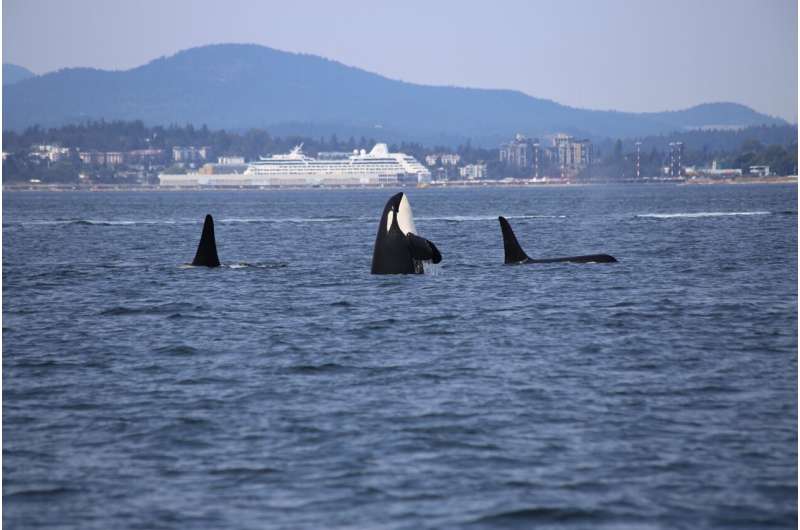Family ties give animals reasons to 'help or harm' as they age

The structure of family groups gives animals an incentive to help or harm their social group as they age, new research shows.
A team of scientists from 17 institutions in six countries, led by the University of Exeter, examined how "relatedness" (strength of genetic links to members of a social group) changes over a lifetime in seven mammal species.
This varies from species to species, depending on whether male or female offspring (or both) leave the group into which they are born.
For example, male and female killer whales both stay in the same group as their mother, so females have a growing number of close relatives (their children and grandchildren) around them as they age.
Other animals, such as female spotted hyenas, usually live among fewer close relatives as time passes.
Given that all animals have evolved to ensure their genes—and those of close relatives—survive, these long-term changes in relatedness to the family group give animals different incentives to engage in "helping and harming behavior across the lifespan."
"We wanted to know how an individual's relatedness to their group changes as they age, and what consequences this might have for behavior," said lead author Dr. Sam Ellis, from Exeter's Center for Research in Animal Behavior.
"We made a model to predict these changes and then tested it using data on banded mongooses, chimpanzees, badgers, killer whales, spotted hyenas, rhesus macaques and yellow baboons. Our model fit the real data. This is exciting is because it allows us to make predictions about how and why social behaviors can change with age."
The ultimate payoff of behaviors for animals depends on how each behavior affects an individual and its relatives.
When living in a group of close genetic relatives, it might be in an animal's interest to behave in a way that helps the whole group.
However, when living among less related or unrelated individuals, the best strategy could be selfish or even harmful behavior.
"Our findings suggest that incentives to help or harm the group change with age, depending on the social structure of each species," Dr. Ellis said.
Professor Darren Croft said, "Across a wide range of species, we see age-related changes in helping and harming behavior which can also differ between males and females.
"Our new work shows that understanding how relatedness to the family group changes with age is key in understanding how the incentives to help or harm the group changes across the lifespan, which can potentially explain these differences across species and between the sexes.
"This research opens the door for future studies by providing testable predictions for how patterns of helping and harming will change across the lifespan and we eagerly anticipate new work testing these predictions."
Among the species included in the study, male spotted hyenas, rhesus macaques and yellow baboons usually leave their birth group once they reach maturity.
In chimpanzees, female offspring leave the group, while for killer whales and mongooses both sexes usually stay in the group into which they were born.
The paper, published in the journal Nature Ecology and Evolution, is titled "Patterns and consequences of age-linked change in local relatedness in animal societies."
More information: Samuel Ellis, Patterns and consequences of age-linked change in local relatedness in animal societies, Nature Ecology & Evolution (2022). DOI: 10.1038/s41559-022-01872-2. www.nature.com/articles/s41559-022-01872-2
Journal information: Nature Ecology & Evolution
Provided by University of Exeter




















